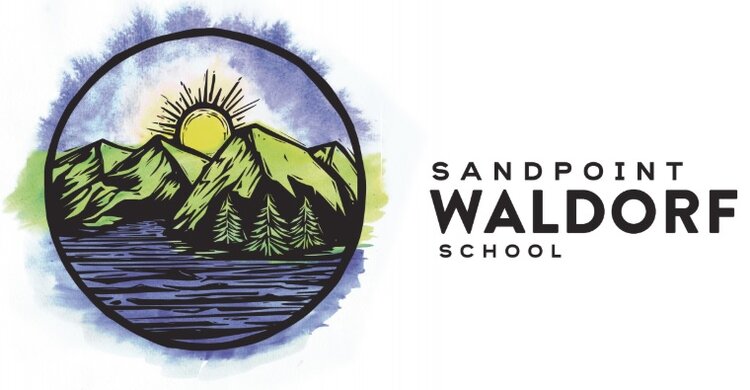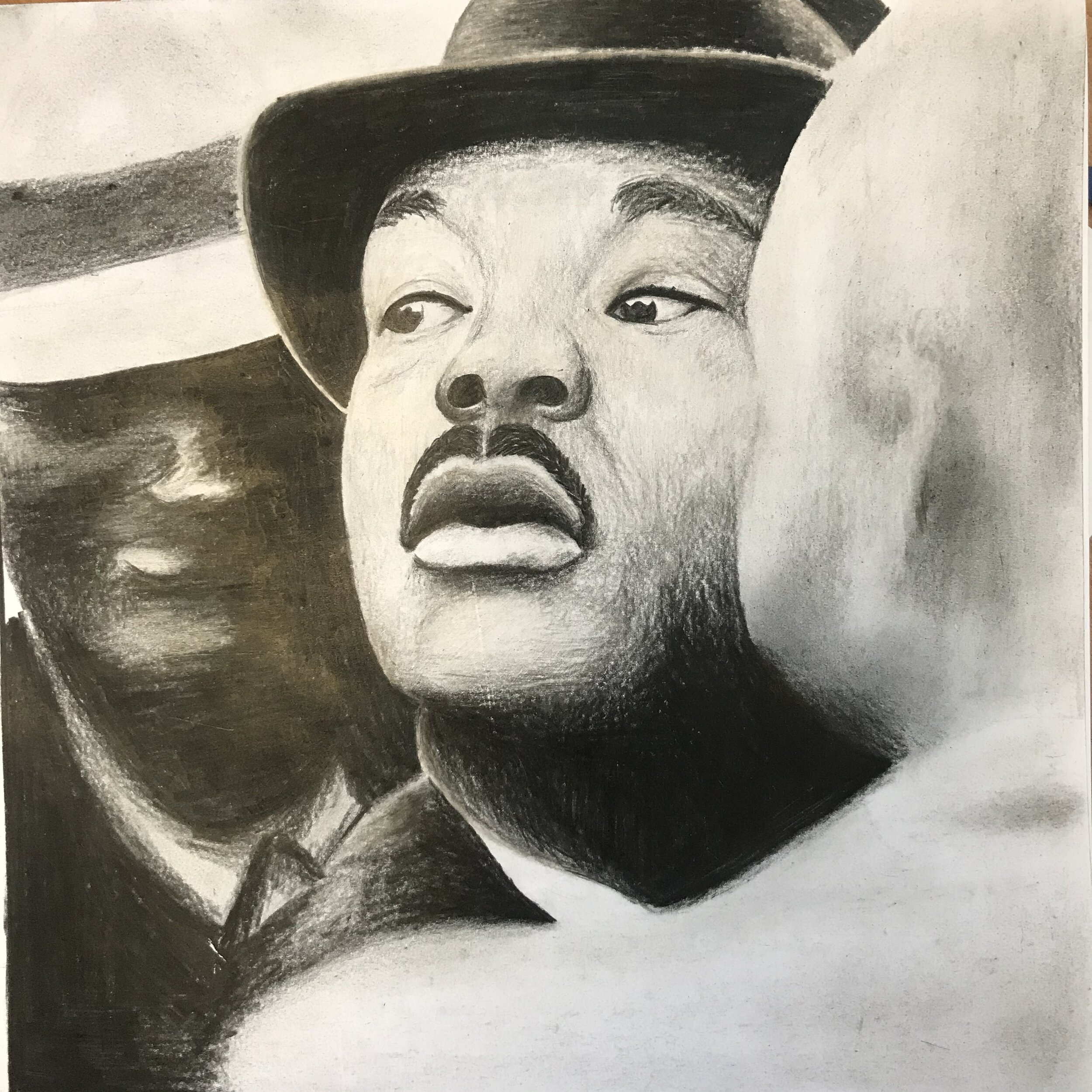UPPER GRADES
Fifth Grade
Greek mythology is taken up in the fifth grade. The debates and struggles of the Greek gods with one another are more complicated and engage the children’s mental powers more than did the simple, powerful action of the Norse myths. A constant theme of metamorphosis in the Greek stories — evolutionary, organic change in all things in dramatic and even unexpected ways — perfectly sets the stage for the fifth grade nature study of the plant kingdom with all its incredible changing forms growing out of one another.
Seed to root, and shoot to leaves of changing shape and size, to expanding flower petals, flower parts, fruit, and seeds once more. From tiny algae to towering oaks, a sense of oneness in the cycles of life is slowly felt. The unity of the plant kingdom with the earth’s surface is a major theme the children can wonder at as they sketch, paint, and write descriptions of the plant world.
The children of the fifth grade are crossing the bridge from imaginative thinking to the beginning of historical or time consciousness. They are introduced to the development of Western man as it evolved from ancient India to ancient Greece. They are given the flavor of ancient India and its Vedas, the Ramayana, the Mahabarata, and the stories of Buddha, or of Krishna. They learn of old Persia and Zoroaster, they relate to Babylonia through the Epic of Gilgamesh and cuneiform writing, and to Egypt with its mythology, monuments, and hieroglyphics. Finally, they take up the richness of ancient Greece: the Iliad and the Odyssey in story form (as they were once originally told), the biographies and stories of the Persian Wars and the Golden Age of Greece when history as we know it first began to be written down.
Also in the fifth grade, the children continue to work in geometry (begun pictorially in the form drawing of earlier years), up to a pictorial presentation of the Pythagorean theorem. They continue in handwork and crafts, often by making parts of their own clothing, needle knitting socks, hats, and mittens, and making toys such as animals, dolls, and doll houses.
In math, they work through fractions and decimals applied in as real and practical ways as possible. With geography, they expand their work to include all of North America. Colorful freehand map drawing helps them to develop a clear, personal understanding of geography. Composition work and spelling are also woven into the main lesson work.
Along with the regular class presentations and plays throughout the school year, woodworking, music, modeling, foreign languages, painting, drawing, gardening, sports, and eurythmy are all part of the fifth grade curriculum.
Sixth Grade
Main lessons continue through all the childhood and adolescent years, in singing and instrument work beginning with recorders and violins in first and second grades, and later adding ensemble, choir and orchestral work. In sixth grade, the children study the acoustics of musical notes.
They have a further introduction to physics in optics (lenses and light refraction), heat, electricity and magnetism, so that the child gets a complete overview of what many can experience observing the inanimate world while he is at an age to see the outer world with a special clarity just before the storms of adolescence set in.
The mineral kingdom is treated in the geography main lesson, as is the study of South America. Astronomy is introduced by observation, tracing the moon, planets and constellations through the night sky. Geometry (including making geometric string figures), the beginnings of geometric proofs, and light and shadow drawing are all taken up in sixth grade.
Historical stories continue in later Greek and Roman history. The children at this age feel a special connection with the biographies of the definite personalities of Roman times. There is real interest in the stories of Hannibal and the idealistic struggles of the Republic with the brothers Gracchi, Cicero, and the Caesars. They learn of the great deeds of the Roman Empire that were lost but still echo in our own time: roads, order, organization, laws, and mastery of the physical world. They also learn of the slavery, greed, and materialism that were washed away in the breakdown of the Empire. They study the development of Christianity as it related to the Roman Empire. The study of the life of the Middle Ages becomes a satisfying entrance into a world of outer order and authority (similar to the order of geometric drawing). This helps to bring a certain balance to the students themselves. In handcrafts, the children may make leather sandals, perhaps very like those of the Romans.
Seventh Grade
Critical thinking blossoms between the ages of 12 and 14, and the warmth of the earlier years of Waldorf education now begins to bear real fruit. Students have developed a rich store of understanding and connections with themselves and their world which leads to the ability to think more clearly and to meet, with confidence, the challenges of adolescence. Seventh grade Waldorf students find great satisfaction in the ideas and feelings echoing out of their childhood, instead of an emptiness and alienation that frequently meets the thinking of middle school age children.
Seventh grade is a year of discovering and exploring the self, the beginning of the growth of individuality. The time is ripe to study the Renaissance, an age when man dared to reach beyond his limits, to rebel against authority and chose to see the world through new eyes. In the arts these qualities were exemplified through the works of Leonardo da Vinci, Raphael, and Michelangelo. Students find out about noble, far-reaching thinkers such as Galileo, Copernicus, Brahe, Visalius, and Paracelsus. The word science comes from the Latin world scio — to know. The scholars of the Renaissance were not content to read Aristotle; they had to know — so like seventh-graders themselves!
During the Renaissance a whole new age was born. Seventh graders learn of the accomplishments of Prince Henry the Navigator, Marco Polo, Vasco de Gama, Magellan, and Columbus, and their horizons expand through the study of Asian and European geography. A preoccupation with the Renaissance appears in many aspects of the seventh grade curriculum; students study astronomy and the human body, learning how captivated Michelangelo and Leonardo da Vinci were with the body’s movements.
Science studies also include nutrition and hygiene and such practical tasks as a complete study of bread making from field and mill to bakery. Physics topics include a continuation of electricity and magnetism and an introduction to simple mechanics. The first principles of chemistry, such as the processes of combustion, are introduced.
Seventh grade students study English Literature, in particular the Arthurian Legends, and continue to develop their writing composition and speech skills. The work of spelling and grammar also continue. Mathematics includes work with powers and roots, positive and negative numbers, algebra, and perspective geometry, another subject of the Renaissance.
Throughout the year core academic subjects are balanced by artistic and practical activities such as gardening, charcoal drawing, painting, clay modeling, woodworking, handwork and movement. Students continue with one or more foreign languages. Music study includes the introduction of madrigals and other Renaissance music as well as music theory and recorder ensemble work. As always, the curriculum strives to maintain a healthy balance of thinking, feeling, and willing activities.
Eighth Grade
The eighth grade is the final year under the guidance of the main lesson teacher. After that students will have a different teacher for each subject area. In the eighth grade students come to grips with present day life by looking at the personalities and forces of today. But to understand the present it is necessary to first gain a perspective of the past. Students and teacher explore earlier times including the American and French Revolutions and the Industrial Revolution.
Through stories and biography students take a look at representative democracy in its infancy and learn about some of the brilliant personalities that shaped American history. Because they have journeyed through the preceding ages – developing an understanding of the Greeks, the Romans striving for law, the deep reverence of the people of the Middle Ages, and the powerful individuality of the Renaissance – students begin to see how the formative years of our modern times had its roots in the past.
Science studies include organic chemistry, anatomy, physics and nutrition. Eighth grade students, who are experiencing a growth spurt, explore the mechanics of the human body including the skeleton and supporting muscle. The ear and eye are also studied. Simple mechanics is broadened to include the steam engine and hydraulics which were among the first developments of the Industrial Revolution. Also studied are the internal combustion engine and the introduction of the assembly line which lead to economic growth on a world-wide scale.
World geography is explored from an economic point of view: the “have” and “have not” nations, the problems of development and resources, and the new interdependence of man on a global scale. Students are introduced to China and Russia, and climatography and meteorology may also be studied. An overview of art history is presented.
Mathematics study includes bookkeeping, business math, algebra, and geometry Students construct mobiles of the five regular Platonic solids, explore linear equations and algebraic sentences, and apply their knowledge of algebra to practical problems such as horsepower and Fahrenheit-Centigrade comparisons. The geometric concepts of the locus in ellipse, hyperbola, and parabola are introduced.
A rich and varied study of the language arts include a continuation of reading, spelling, and grammar with a special focus on the composition and presentation of scientific reports. Waldorf grades classes perform plays each year, but in Eighth Grade the production is usually longer. Many classes perform a Shakespeare play in their last year of grade school.
Specialty classes include foreign language, woodworking, pottery, modeling, music, handwork, painting, and movement. Music study will include ensemble work, note reading, and music theory.





